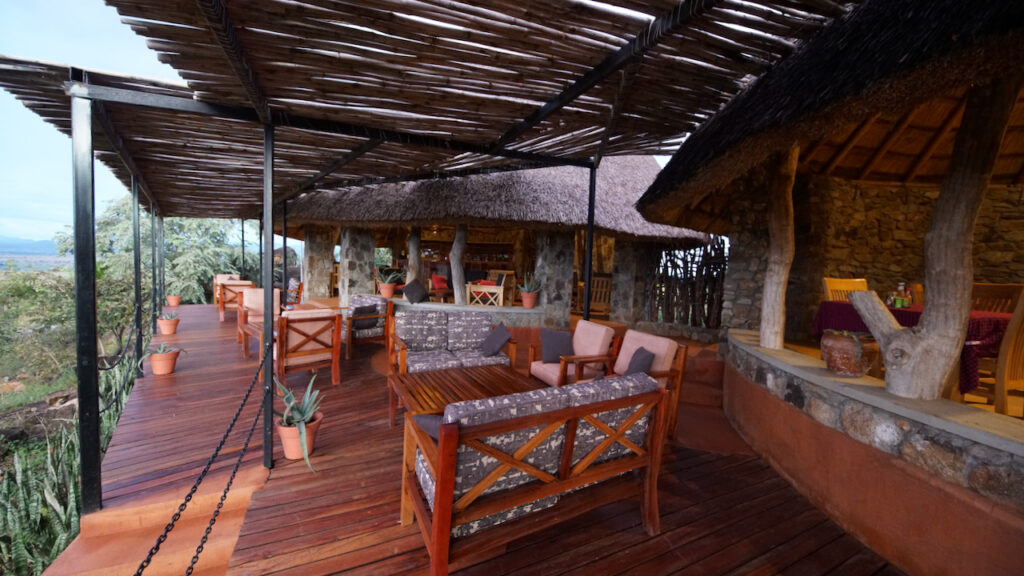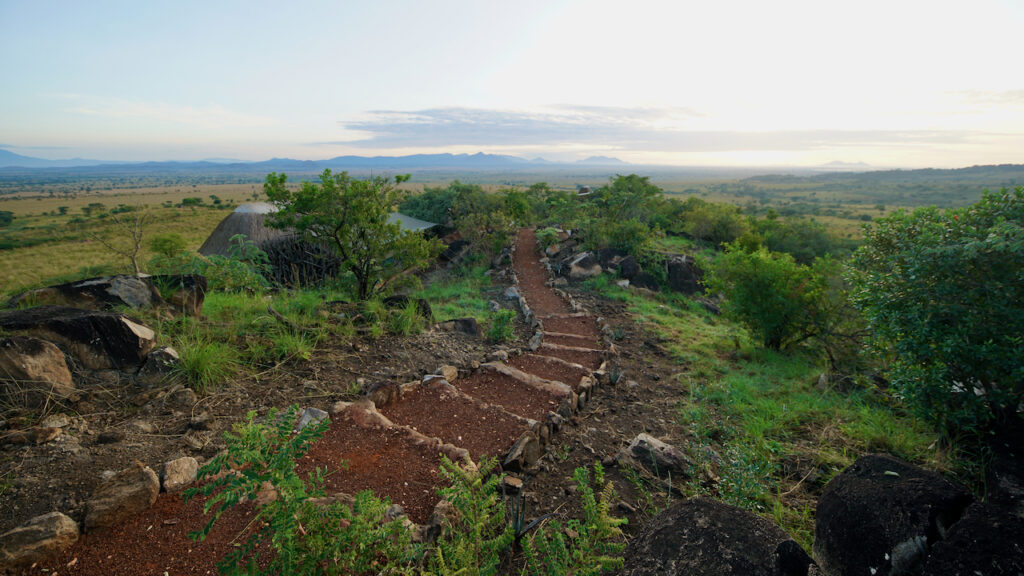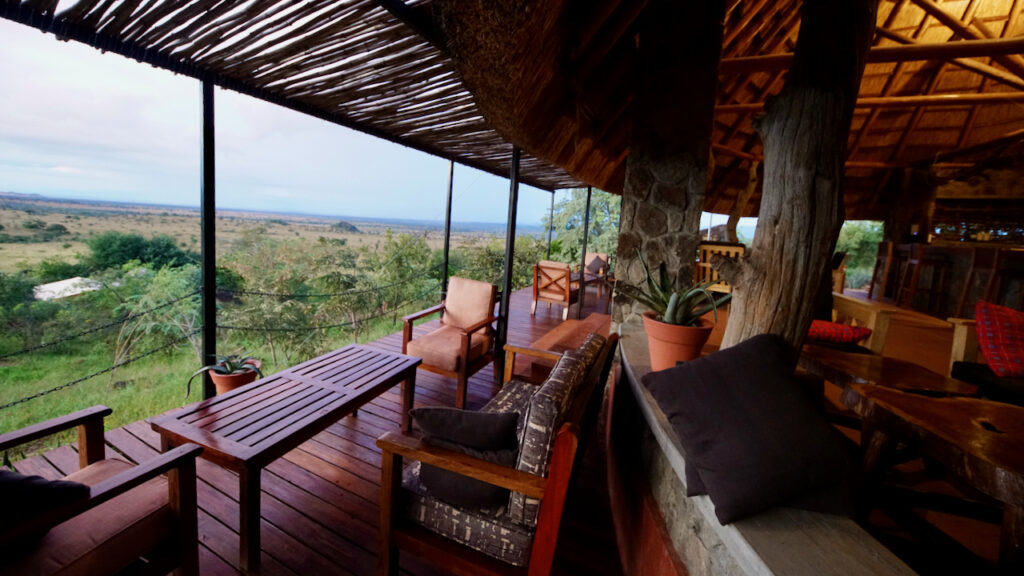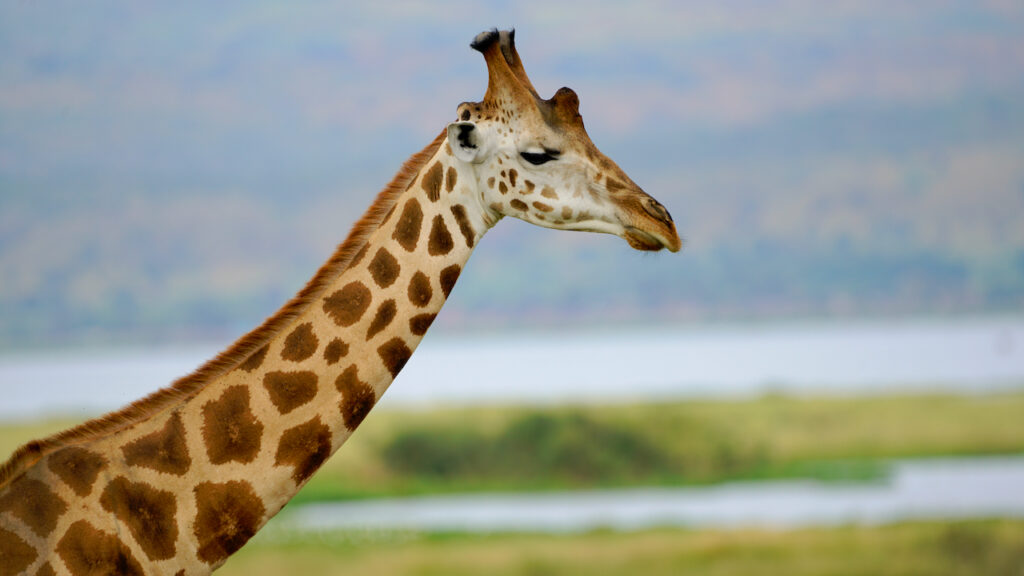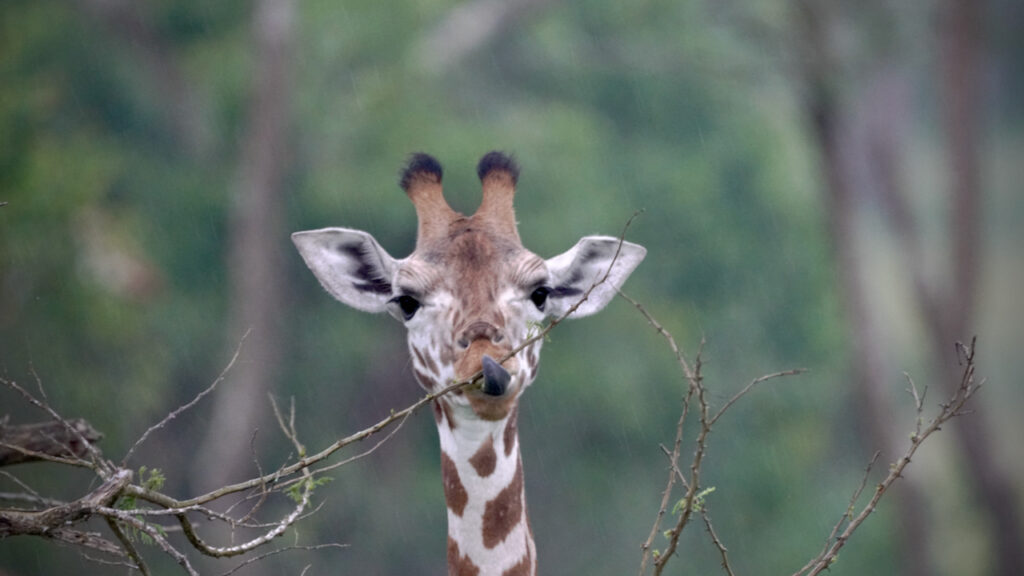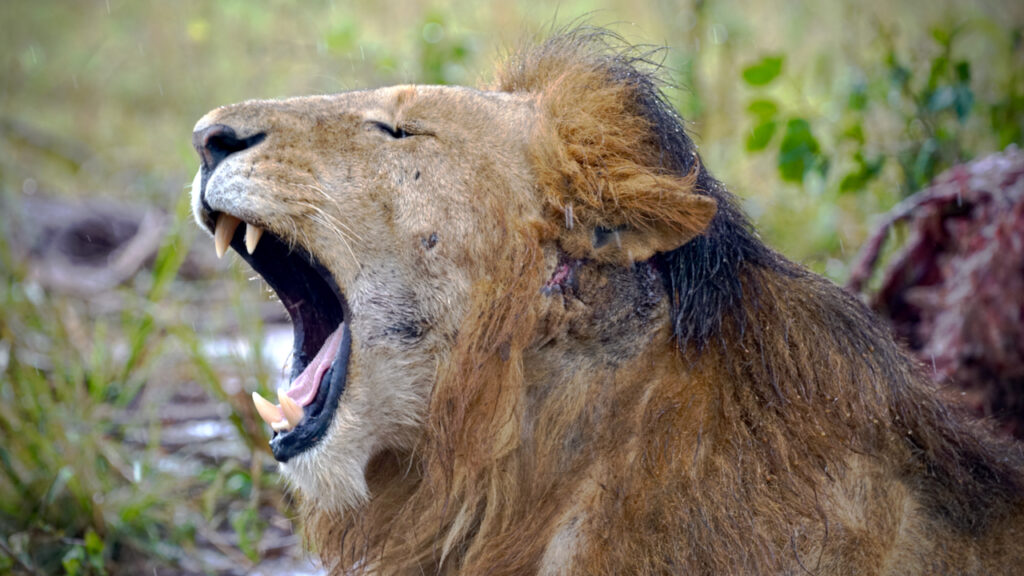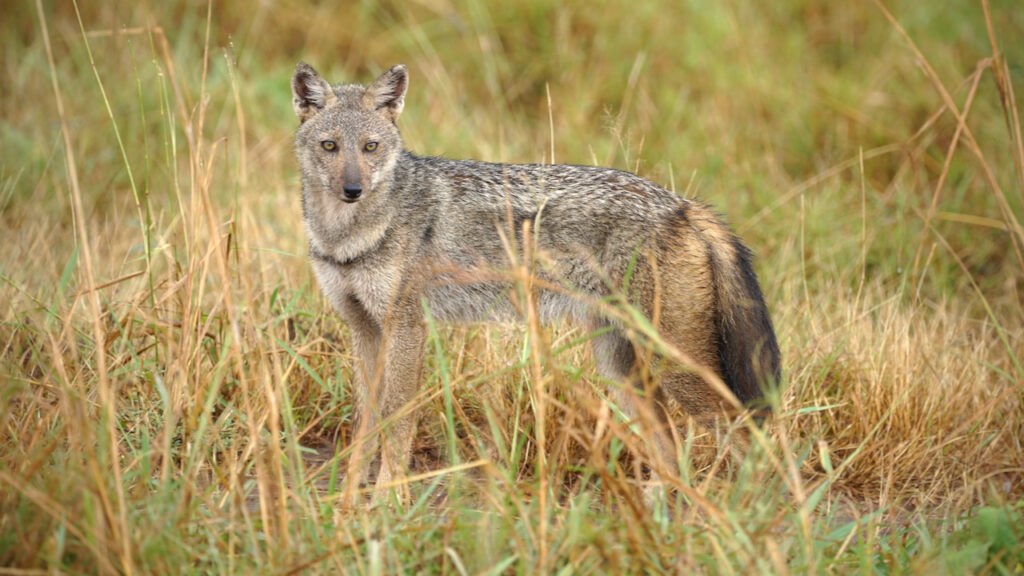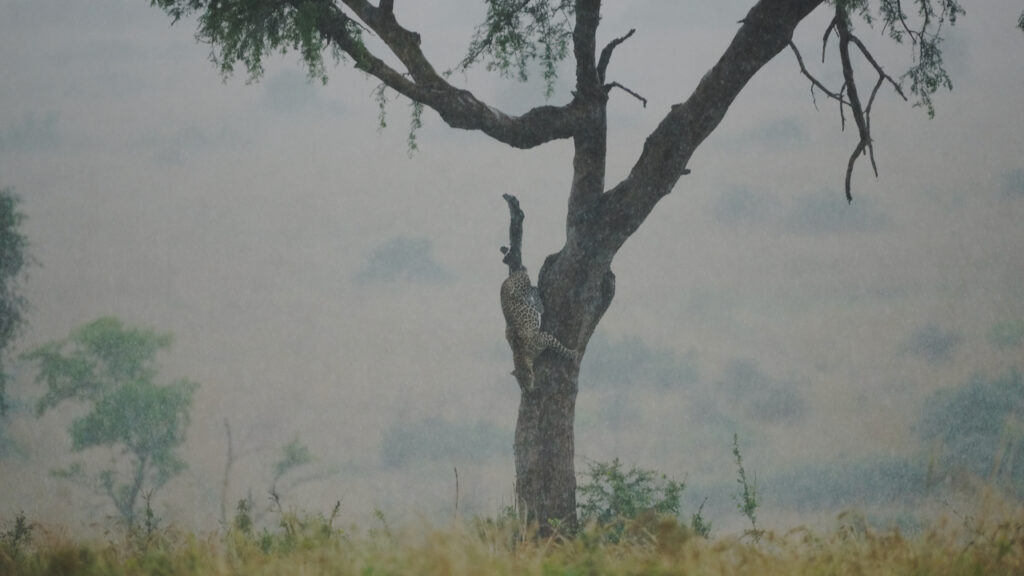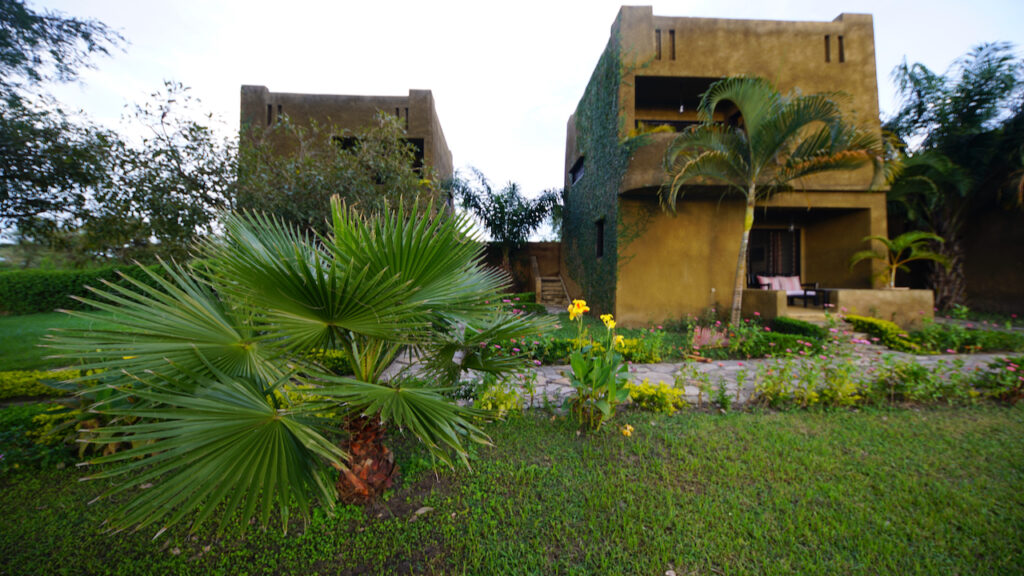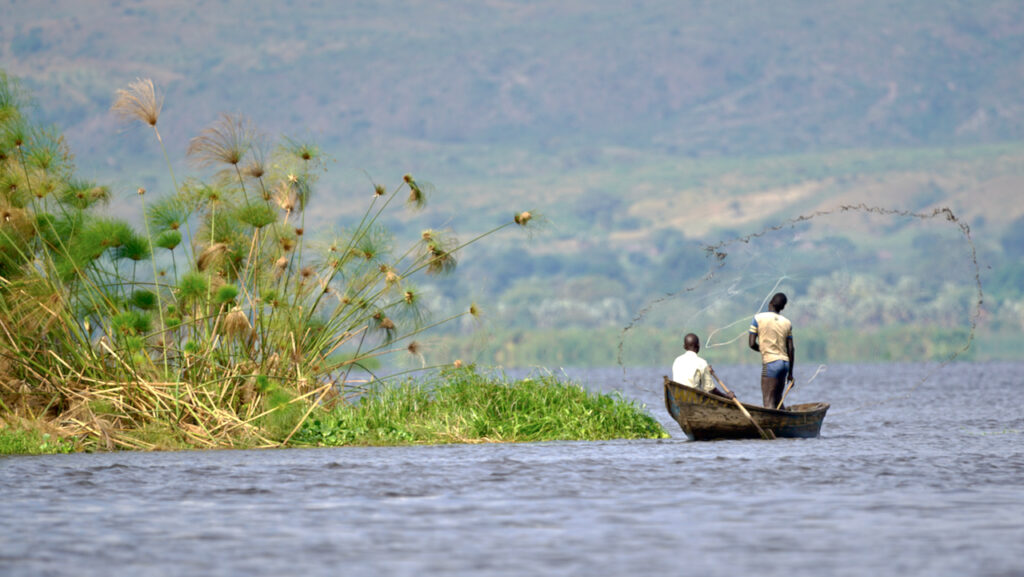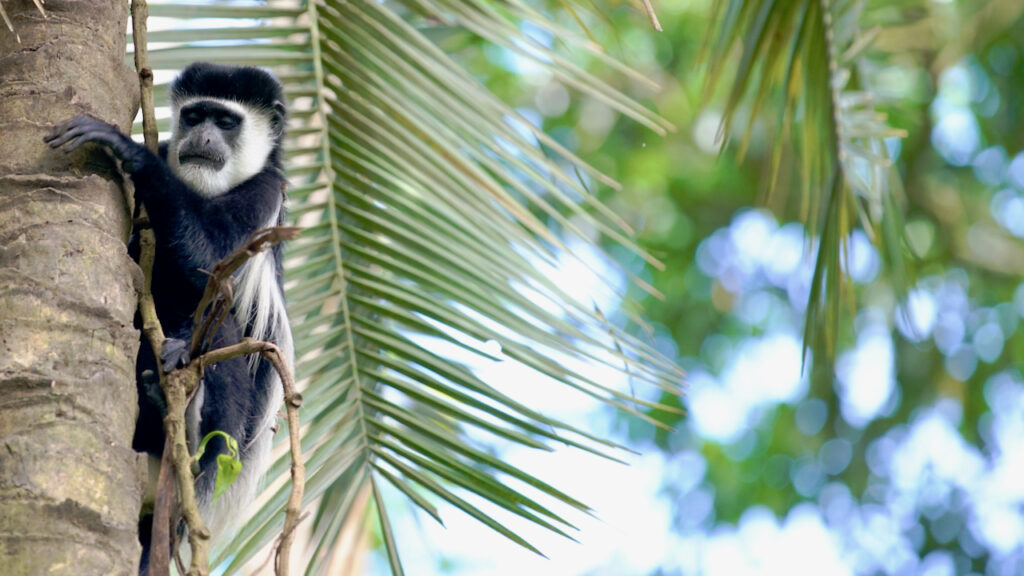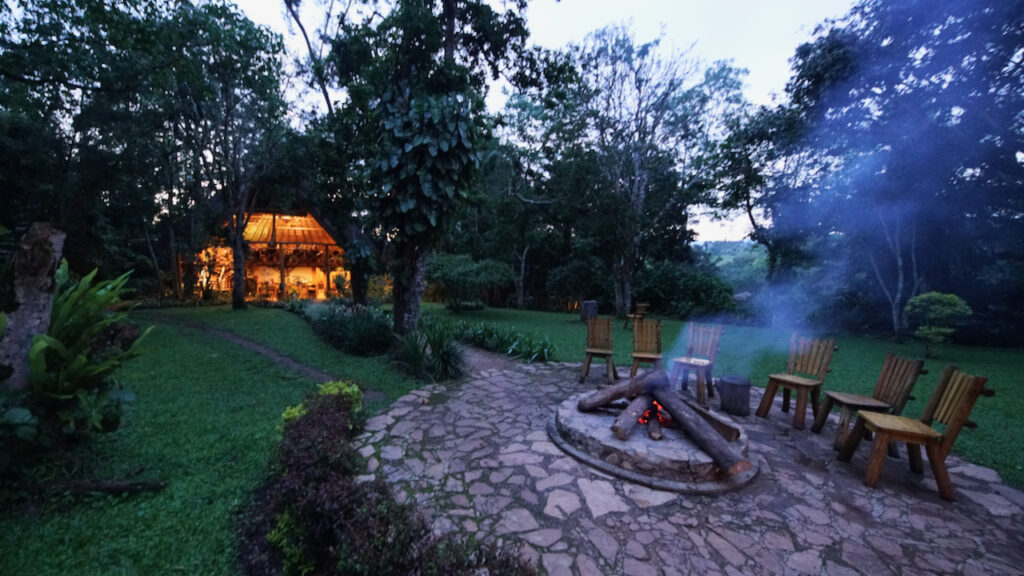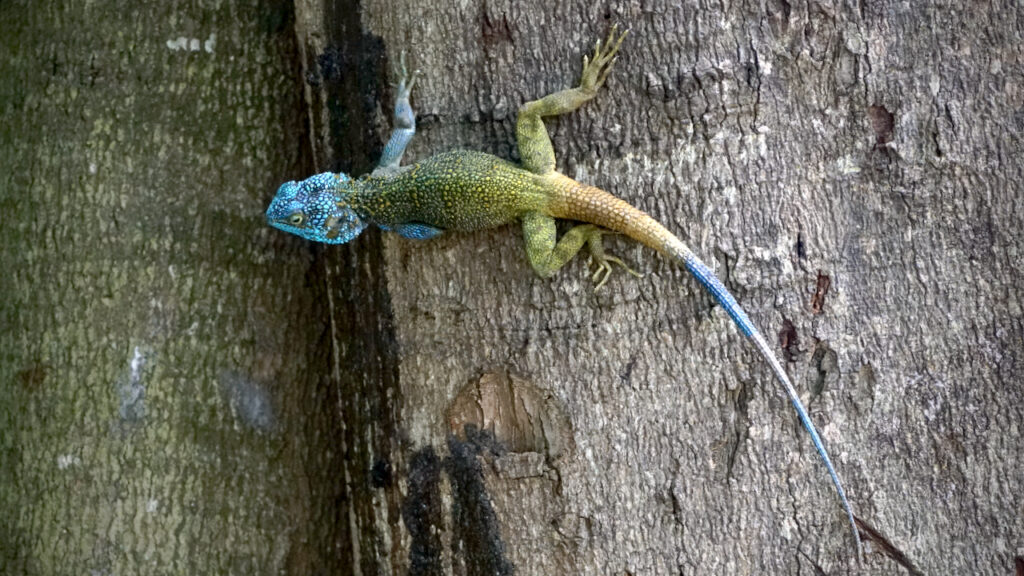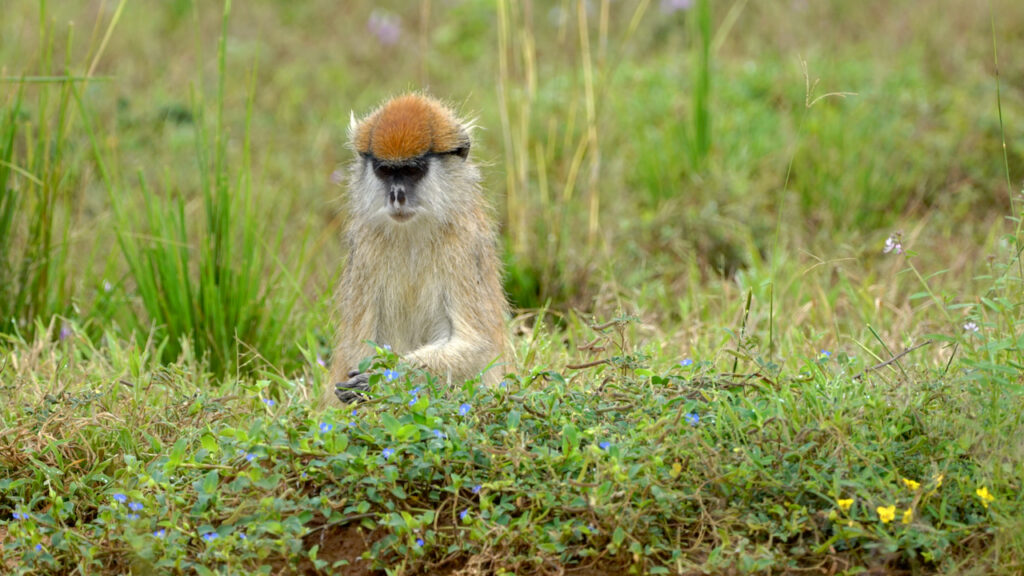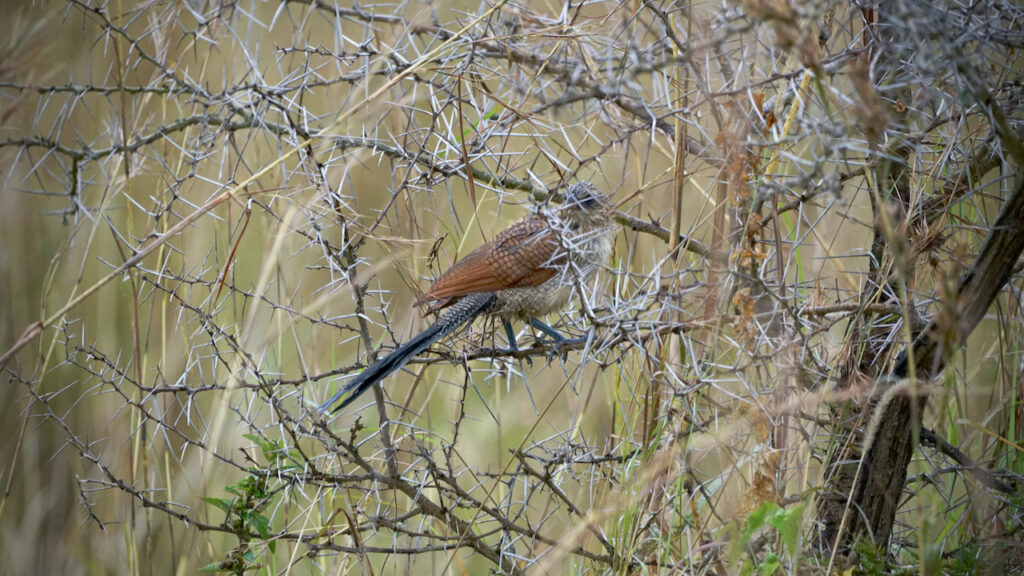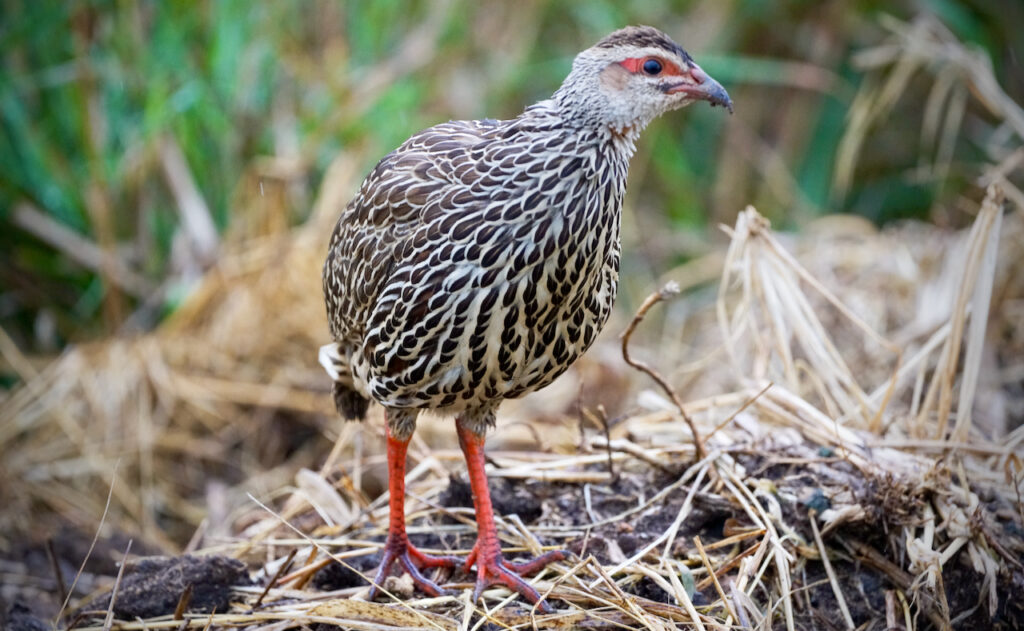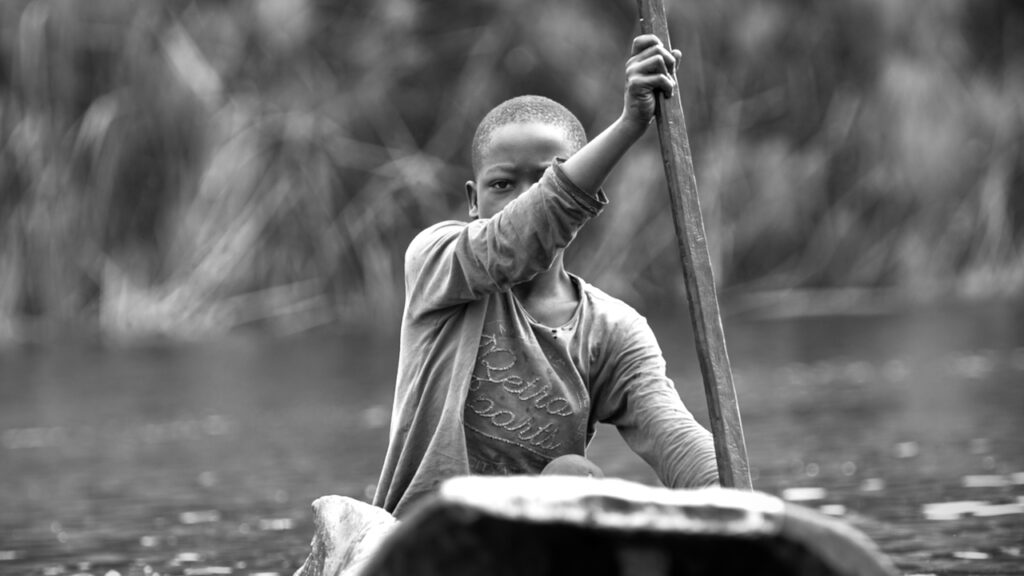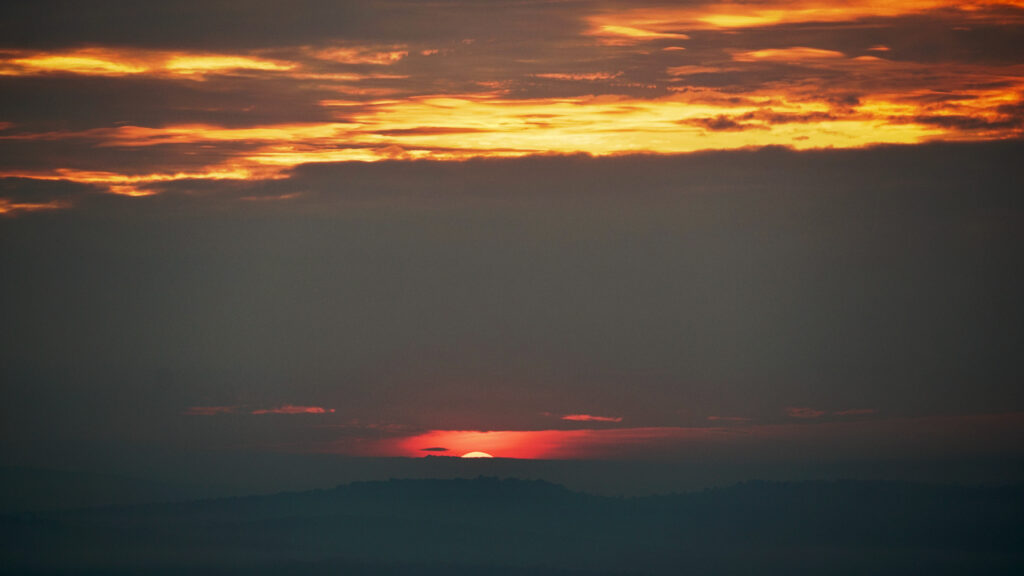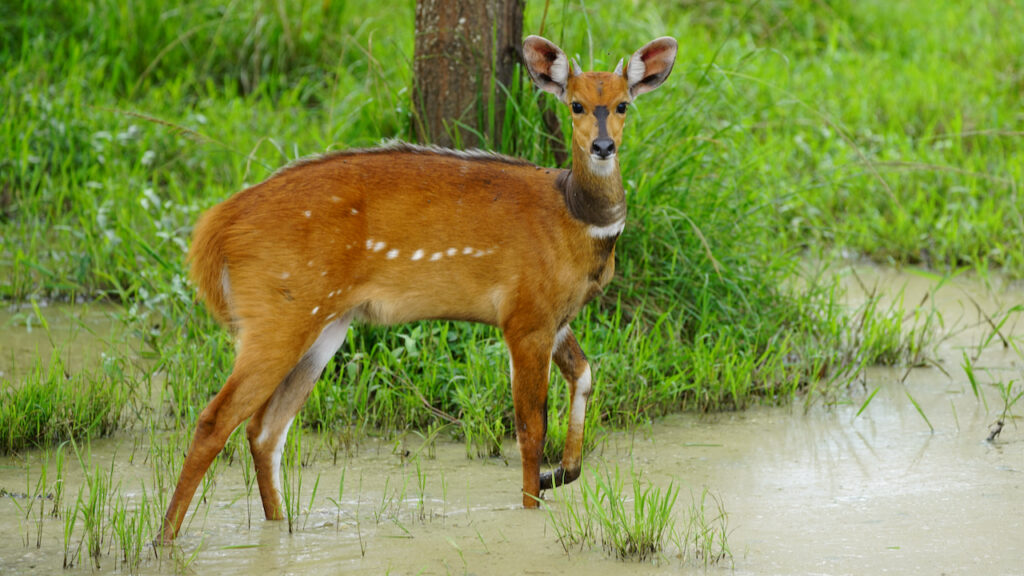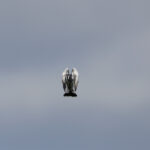Wildlife tourism is the largest source of income for Uganda’s national budget, more than the export of coffee, tea, cotton and gold combined! 5-star safari lodges are being built around the parks. Tourists from all over the world pay up to $ 360 a night there. A day pass into the national Parks costs 40 dollars, and according to the law, one-third of the employees in the luxurious lodges must come from the surrounding villages. The park administration is also obliged to hire some of the rangers on site.
But this happens only rarely I find out from most villagers, and regardless of which villages I ask, the answers were mostly the same. Monolog of a local farmer: It isn’t easy to get a job in the park. When the park managers visit us, out of the headquarters in Kampala, we can see at their nametags that they are not from here. And if they don’t know us, they won’t give us the job, even when we apply. But if the district chairman puts in some right words – then we maybe have a chance.

Uganda is a country that fascinates its visitors due to the diverse flora, fauna, people and localities. They are as varied and colourful as Africa itself. The country offers good infrastructure without being overcrowded. Located on the equator, Uganda, with its rainforests, wetlands, high plateaus and mountain ranges provides a variety of exotic animals and plants that are hard to find in the rest of Africa. That there are a variety of tour providers in this regard is self-evident, and the offers reach the level of individual requirements. Therefore and at this point, my personal recommendation for guided tours in Uganda: HABARI TRAVEL The website of Habiri Travel is only provided in German but do not hesitate to write them anyway since they answer on your request will be provided in the language of your initial contact.


The photo shows the 3514 km long circuit, with Entebbe as the starting and finishing point, as well as the various daily stages and the description of the National Parks. The entire route includes game drives in the National Parks. Video: Uganda Road Trip Impressions
KIDEPO, the remote Kidepo National Park in the far northeast of the country is rightly considered one of the most untouched national parks in the world. In addition to the classic East African savannah inhabitants, the fauna of Sudan can also be found there. Large and small kudus live next to the Rothschild Giraffe, elephants and lions. The Ik-tribe live in the mountains in the east of the park – a tribe whose everyday life can be witnessed when visiting the village. At eye level, you are immersed in a completely different culture, and unforgettable experiences remain – without a big tourist smack. Kidepo Savannah Lodge


Since poaching has now been curbed, the chances of good sightings of some of the 80 species of mammals, including herds of African buffalo and elephant, are very high. I was fortunate because, in addition to the animals mentioned, I could also observe Rothschild giraffes, lions, leopards, elephants and jackals like many other classic savannah inhabitants.

The leopard: I was lucky because the few national park visitors I met that day left the park early due to the constant rain, and so I enjoyed the loud pounding of the heavy rain on the car roof. At the same time, the otherwise quiet expanse of the savannah lay in front of me, ‘(Big) cats’ are afraid of water and so I used my binoculars to search for trees with sturdy branches close to the ground and soon found what I was looking for. What a splendid specimen and while my amazement spilt into pure joy, I was able to take a few photos of this beautiful big cat, despite the heavy rain.
The eye-catching leopard is one of the most difficult to observe large species in Uganda due to its nocturnal, lonely behaviour and well-camouflaged fur. Their survival is based in part on their ability to adapt to warm and cold climates and the ability to climb trees while carrying heavy prey – and to protect them from other predators such as lions and hyenas. They can reach incredible speeds of up to 58 km / h and hunt antelopes and monkeys as well as fish, birds, insects and reptiles. In the past, leopards were hunted for their beautiful fur, habitat loss is now their greatest threat.

Murchison Falls Nationalpark, up to here, in the northwest of the country, you follow the course of the mighty Nile from its source at Victoriasee. Borassus palms love the wet and swampy banks of the enormous water stream that divides the park in half. The rare, bluish-feathered shoebill stork, the darling of the ornithologists, is also hidden here. Those who are more enthusiastic about the big game are also right here. Especially on the river bank, elephants, buffalos, hippos and crocodiles crowd close together, pelicans and herons sometimes flutter just above your head.
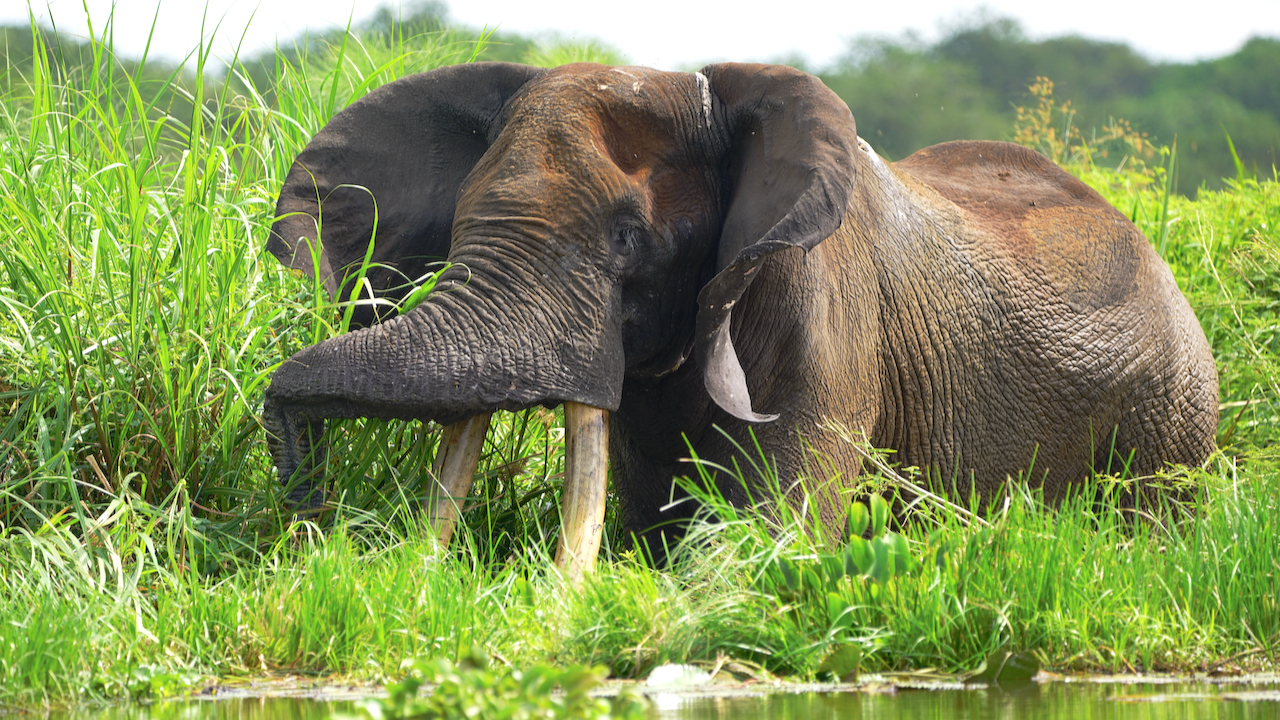

Africa’s wild force is felt further down the river, because there, at the Murchison waterfalls, the enormous water masses of the Nile force their way through a narrow gorge before they pour into the valley forty-three meters.Video: Drone view over Murchison Falls
Here the course of the Nile becomes completely dramatic. The longest river in the world plunges into the depths of thunderous white spray through this rocky gorge, only seven meters wide. Director John Huston chose this formidable backdrop for his 1951 film African Queen

THE LEGEND OF THE SOURCE OF THE NILE. Knowledge is power and evidence is evidence of power. This principle was probably the basis for the tireless Africa expeditions in the 19th century. Above all, it was the London Geographic Society that wanted to make the most important discoveries on the black continent. And what would be more prestigious than being the first nation to explore the source of the Nile, which has been unknown for centuries? By further interest check the following link about European exploration of Africa.
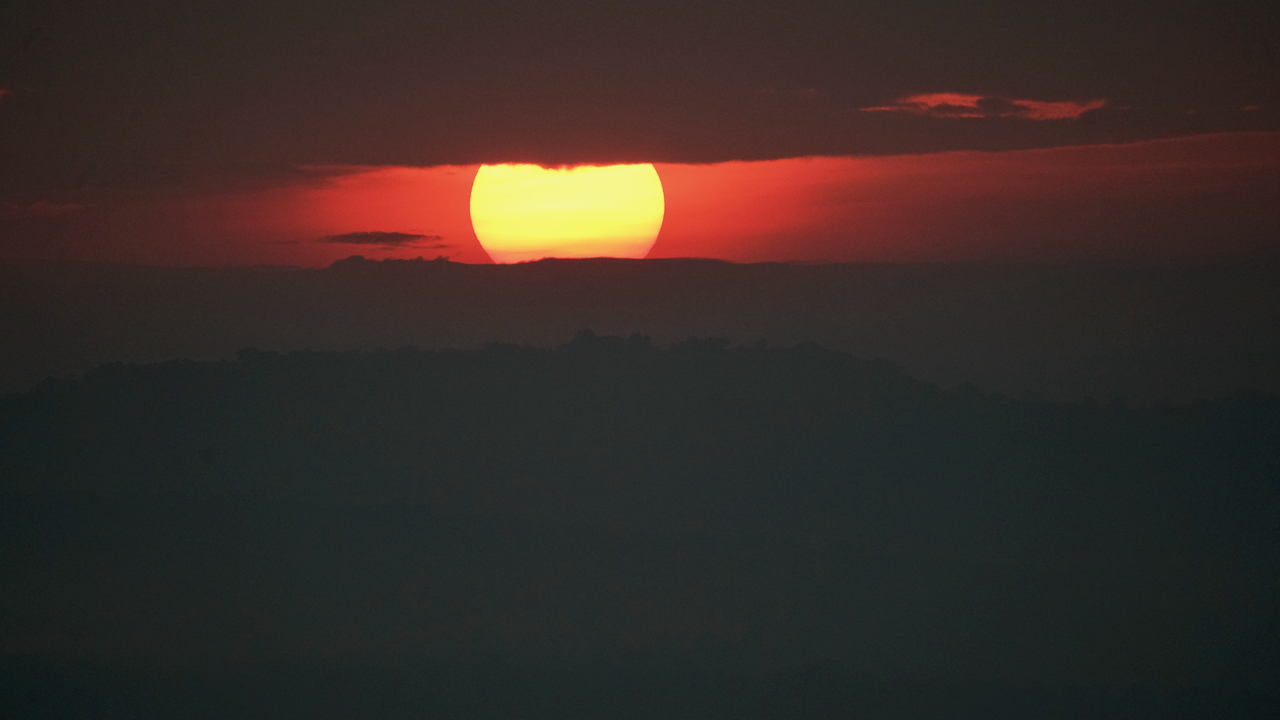
 KIBALE NATIONAL PARK, deep in the west of Uganda – where the Ruwenzori Mountains are elevated above the clouds, where the mist-damp haze lies over the lush tea plantations and leaves a bluish shimmer – that’s where the chimpanzees live. Almost everyone has read or heard that our DNA is 98% identical to that of the chimpanzee, but that the similarity extends to gestures, facial expressions and social behaviour remains surprising, despite everything. One quickly thinks to recognize the characters while observing the active young chimpanzees. Their loud shouts, the wild frolicking of the boys, the admonitions of the mothers, the mutual personal care on the floor of a clearing. But in the peaks of the dense rainforest, there is still a multitude of colourful monkeys.
KIBALE NATIONAL PARK, deep in the west of Uganda – where the Ruwenzori Mountains are elevated above the clouds, where the mist-damp haze lies over the lush tea plantations and leaves a bluish shimmer – that’s where the chimpanzees live. Almost everyone has read or heard that our DNA is 98% identical to that of the chimpanzee, but that the similarity extends to gestures, facial expressions and social behaviour remains surprising, despite everything. One quickly thinks to recognize the characters while observing the active young chimpanzees. Their loud shouts, the wild frolicking of the boys, the admonitions of the mothers, the mutual personal care on the floor of a clearing. But in the peaks of the dense rainforest, there is still a multitude of colourful monkeys.

Kibale Forest Camp, offers lovely accommodation, as this camp is located in the middle of the cloud forests and is constantly surrounded by colourful birds as well as monkeys. Kibale is also known for observing wild chimpanzees, here is a link with related reviews. The tents fixed on stone foundations are simple but offer all the necessary amenities such as toilet, shower, sink, mosquito nets, sockets and a covered seat area in front of the tent. WLAN, WIFI/ Internet in good quality is very rare to find in Uganda (this camp is no exception in this regard). Only in the capital Kampala, the hotels, excellent cafés, as well as restaurants provide a usable internet connection with a good transmission rate.

Quen Elizabeth Nationalpark is located in western Uganda. It has existed since 1952. The park has a size of 1978 km² and borders on the Eduardsee and the Virunga National Park in the Democratic Republic of the Congo in the west, and the Ruwenzori Mountains in the north. The park was christened in its name in honour of Queen Elizabeth II when she visited in 1954. The 36 km Kazinga Canal connects Lake Edward and Lake George. Exciting boat trips are possible on the canal; you can see many hippos, crocodiles and lots of birds. A few chimpanzees and other primate species still live in the east of the park, Kyambura Gorge. The colourful birds that you can see in almost every national park, but especially along the many rivers and lakes in Uganda, are nearly as unforgettable as they are impressive, like the Grey-crowned crane.

The south of the park (Ishasha Plains) is known for its tree-climbing lions, which usually rest on the branches of a giant fig tree, a popular subject for photos. The Rwenzori Mountains are elevated in the background and complete the impressive scenario. Would you spot something in the first picture while driving the speed of 40 km / h? In the second picture and with a telephoto lens of 400 mm, it gets much easier!


Kisoro is a small town in western Uganda at the foot of the Virunga-Volcanoes near the border with Ruanda and the Democratic Republic of the Congo with 11,328 inhabitants. It is the capital of the district of the same name, Kisoro and the starting point for gorilla trekking, see Uganda, the thriving corruption of the rainforest.

 The area around Kisoro is surrounded by countless crater lakes, mixed woodland and rainforests as well as a colourful flora and fauna. An excellent way to get in touch with locals, go canoeing and take pictures of water birds. A hike to Lake Mutanda leads to a hill that offers impressive views of Kisoro, Lake Mutanda and the Virunga volcanoes.
The area around Kisoro is surrounded by countless crater lakes, mixed woodland and rainforests as well as a colourful flora and fauna. An excellent way to get in touch with locals, go canoeing and take pictures of water birds. A hike to Lake Mutanda leads to a hill that offers impressive views of Kisoro, Lake Mutanda and the Virunga volcanoes.

My last stop on the 3514 km long Uganda trip is Lake Mburo National Park, a protected area in the western part of Uganda with a size of 370 km². In 1933 a controlled hunting area was established, which was made a game reserve in 1963. Finally, the national park was established in 1983. Members of the Hema also used the grasslands for their cattle after the national park was opened. This resulted in a political conflict with the Obote government, which also led to the resettlement of resisting residents who received no compensation for the loss of land they had suffered. This did not give the national park a favourable reputation and in 1985 former residents occupied areas of the national park, thereby destroying infrastructure facilities, expelling park rangers and killing animals. The National Park territory was redefined by the later NRM government in 1986, which now only comprised half of the original area. The following camp is located on a high hill at Lake Mburo National Park and offers one of the best views in Uganda, the Eagles Nest

The great thing about Lake Mburo National Park is, that the (very unusual) entire park is open to hikers as long as they are accompanied by a ranger. The locations include the salt lake at Rwonyo, the lakeshore, the Rubanga forest and a hill with a beautiful lake view. The network of trails to the east of the park consists of acacia forests, wetlands, grassy slopes, rocky outcrops and seasonally flooded valley floors. Early morning and late afternoon are the best times to roam the park in search of wildlife.

African buffalos are found in most of Uganda’s national parks and they mainly live in open savannas, but also like to stay in swampy areas where they cool off from the hot temperatures and drink some water. An adult buffalo is usually black and dark brown in age and weighs around 750 kg, with the males being slightly larger than the females. Calves are known to have reddish hair that later turns black as they grow.

The wildlife on the eastern shores of Lake Mburo can be explored on a boat ride. Look out for crocodiles, buffalos and hippos as well as colourful kingfishers, magnificent ospreys and hammerheads with their huge nests. The African Finfoot is usually seen individually or in pairs. They are very mysterious, even experienced ornithologists see them very rarely, which makes them a valued observation for bird watchers. The Finfoot is an underwater specialist and an excellent hunter.

The Malachite Kingfisher has been on my wish list for a long time. It only grows to around 14 centimetres. The top is striped in ultramarine blue and black. He wears his eponymous cobalt-blue feather hood most of the time, and the blue of the crown extends to the eyes. What a colourful encounter and my amazement and joy accompanied me all day long.
But here too, climate change is making itself felt and selling rare wild animals in Uganda and other African countries. The following link Climate change in Uganda focus specifically and only on the Queen Elizabeth National Park, but there are lots of useful publications to find online regarding this topic. By further interest also have a look at the Uganda Climate Action Report of 2016.
Now it’s time for me to say goodbye. After an exhausting, adventurous and three-week trip to Uganda, I not only arrived with a vast photo collection about Uganda’s wildlife in Entebbe but also with as many impressions about the people, the culture as well as their current and future challenges.
Roland Hummer, Uganda December 2019


